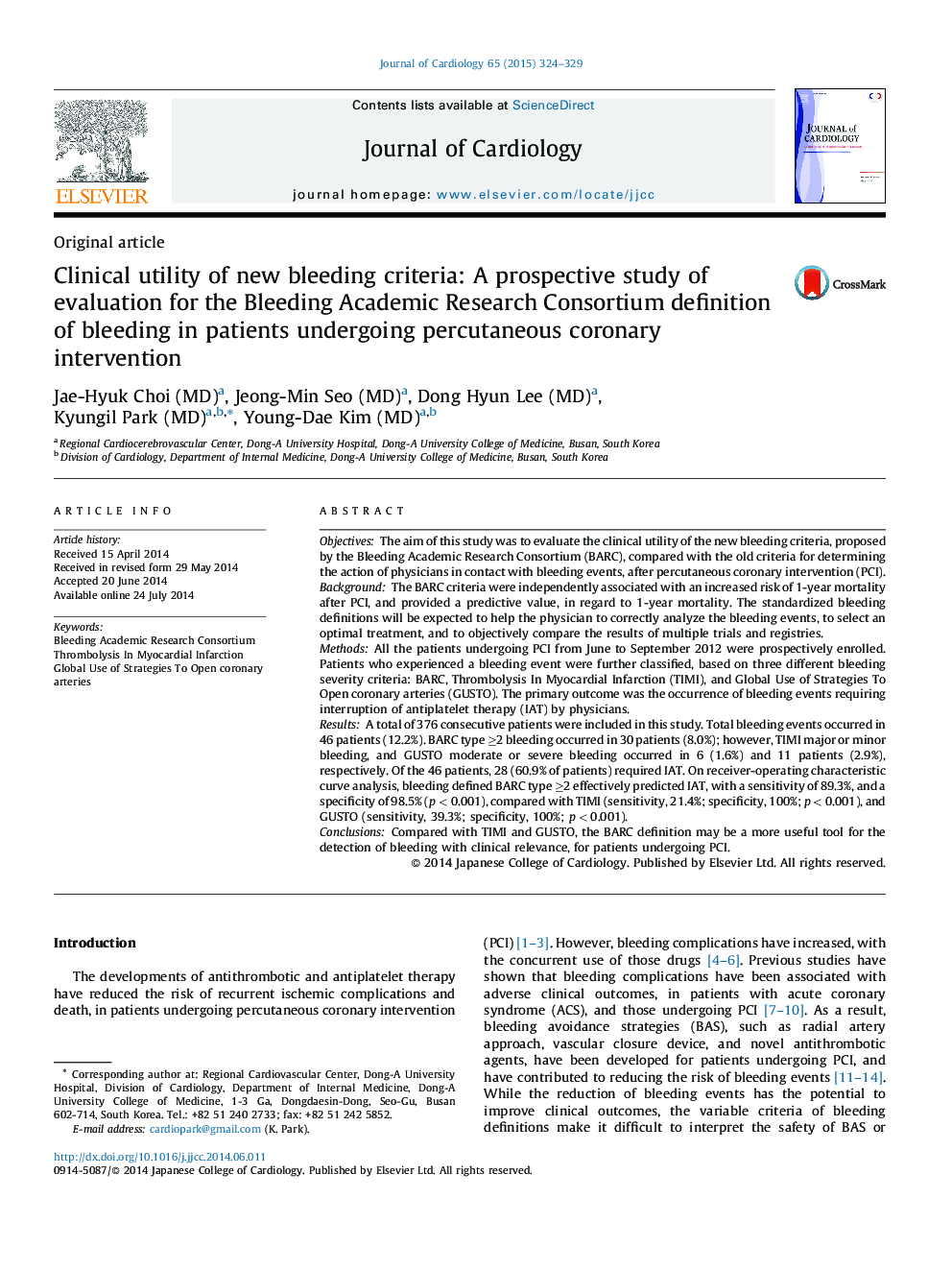| Article ID | Journal | Published Year | Pages | File Type |
|---|---|---|---|---|
| 2963070 | Journal of Cardiology | 2015 | 6 Pages |
ObjectivesThe aim of this study was to evaluate the clinical utility of the new bleeding criteria, proposed by the Bleeding Academic Research Consortium (BARC), compared with the old criteria for determining the action of physicians in contact with bleeding events, after percutaneous coronary intervention (PCI).BackgroundThe BARC criteria were independently associated with an increased risk of 1-year mortality after PCI, and provided a predictive value, in regard to 1-year mortality. The standardized bleeding definitions will be expected to help the physician to correctly analyze the bleeding events, to select an optimal treatment, and to objectively compare the results of multiple trials and registries.MethodsAll the patients undergoing PCI from June to September 2012 were prospectively enrolled. Patients who experienced a bleeding event were further classified, based on three different bleeding severity criteria: BARC, Thrombolysis In Myocardial Infarction (TIMI), and Global Use of Strategies To Open coronary arteries (GUSTO). The primary outcome was the occurrence of bleeding events requiring interruption of antiplatelet therapy (IAT) by physicians.ResultsA total of 376 consecutive patients were included in this study. Total bleeding events occurred in 46 patients (12.2%). BARC type ≥2 bleeding occurred in 30 patients (8.0%); however, TIMI major or minor bleeding, and GUSTO moderate or severe bleeding occurred in 6 (1.6%) and 11 patients (2.9%), respectively. Of the 46 patients, 28 (60.9% of patients) required IAT. On receiver-operating characteristic curve analysis, bleeding defined BARC type ≥2 effectively predicted IAT, with a sensitivity of 89.3%, and a specificity of 98.5% (p < 0.001), compared with TIMI (sensitivity, 21.4%; specificity, 100%; p < 0.001), and GUSTO (sensitivity, 39.3%; specificity, 100%; p < 0.001).ConclusionsCompared with TIMI and GUSTO, the BARC definition may be a more useful tool for the detection of bleeding with clinical relevance, for patients undergoing PCI.
